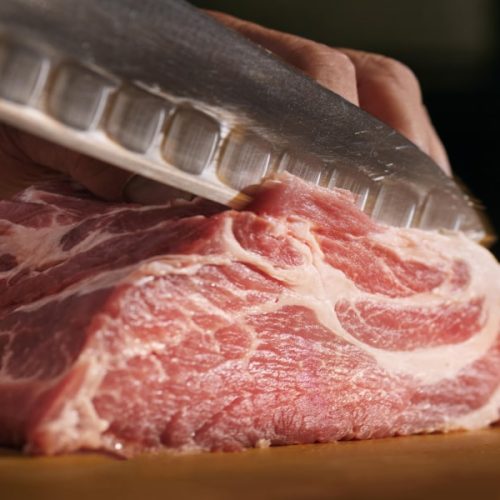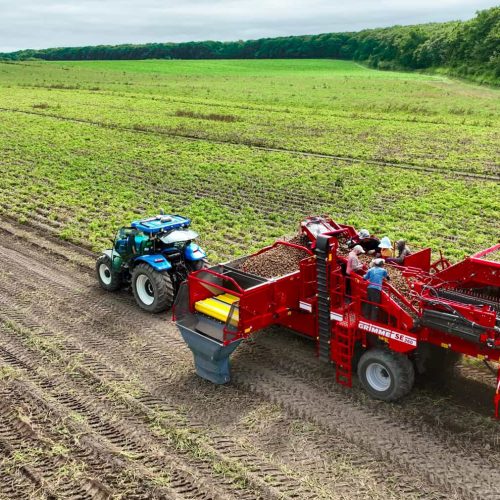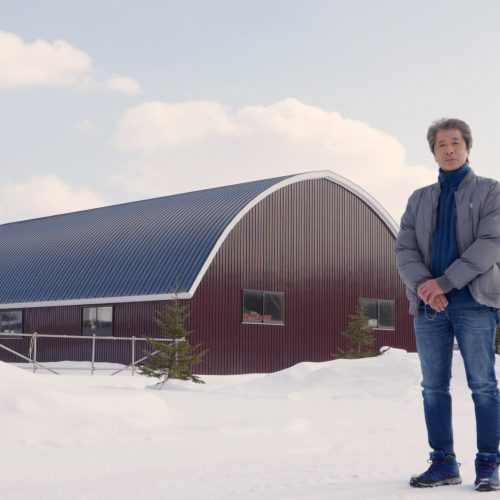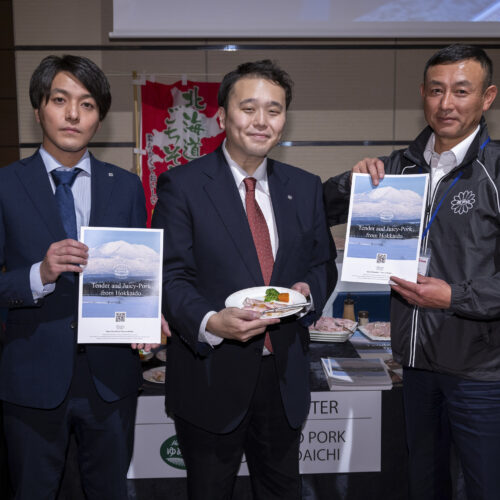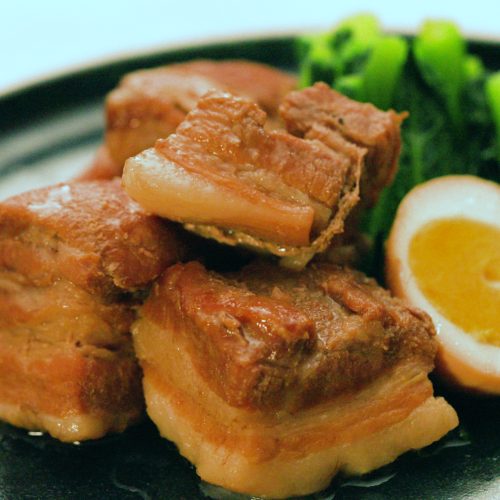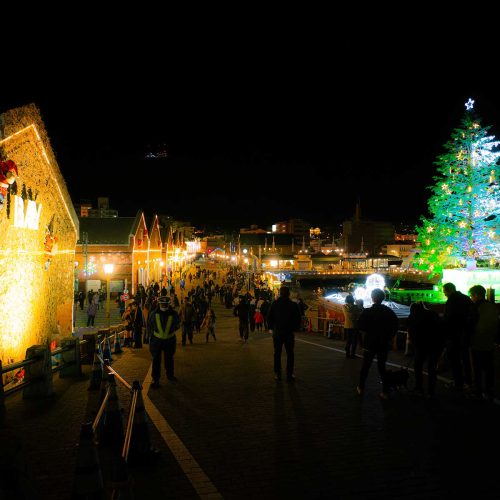- INTERVIEW
Facing and Cuddling with Pigs. - Our Passion for "Yume no Daichi" Brand Pork
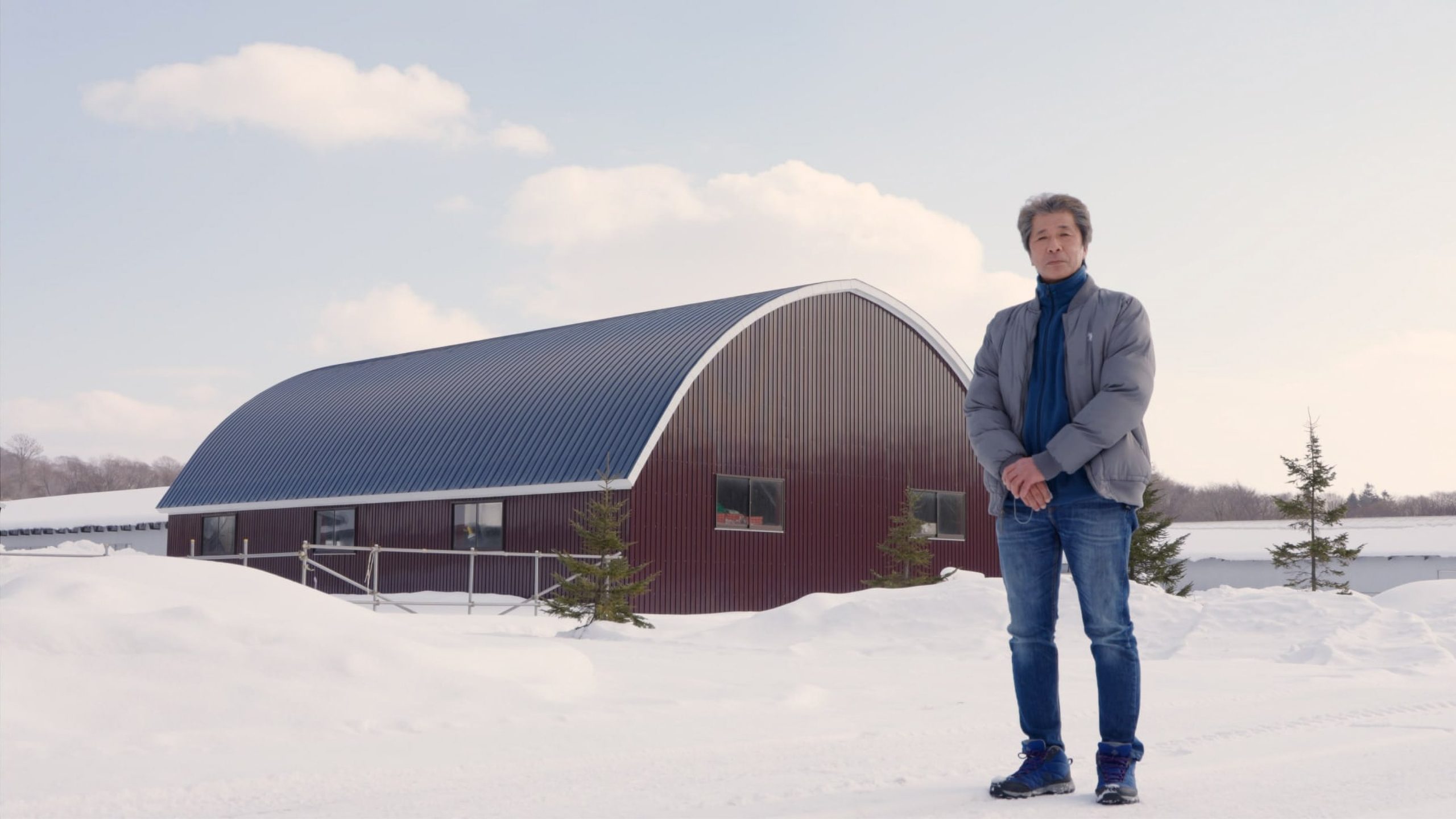
Interviewee

KOGOTA Mitsuru
Farm Manager
Born in Chitose City, his family runs a pig farm. He says with a smile, "When I was a child, pigs came into my dreams and scared me". After working in the family business and at a nearby agricultural corporation, he moved to Hokkaido Chuo Farm in 2015, and after starting up the Chitose Farm, he has been working there ever since. His hobbies are traveling to hot springs and reading.
Hokkaido Chuo Bokujo Co., Ltd., which produces the branded pork “Yume no Daichi”.
The company was established in Hokkaido in 2010 as the production department of S Foods Co., Ltd., a major food processing company. After that, starting with the Akaigawa farm, new farms were established in various parts of Hokkaido. Chitose Farm is the third farm to open. Today, it has grown into an important production base that not only supplies meat to Japan, but also exports to all over the world.
“In Hokkaido, there are branded pork that have their own characteristics depending on the region. Actually, I have had other branded pork, Farm Manager Kogota told us with a smile.
He continues, “The basis of good taste is that the pigs are healthy.
Health is the key to good taste. This is what every consumer wants, but it can be contradictory at times.
However, with “Yume no Daichi,” it works like the two wheels of a car.
We asked Kogota Farm Manager, who has such a consumer’s point of view, how he produces delicious, safe and secure pork, and how he deals with pigs on a daily basis.
目次
Roles required of farms
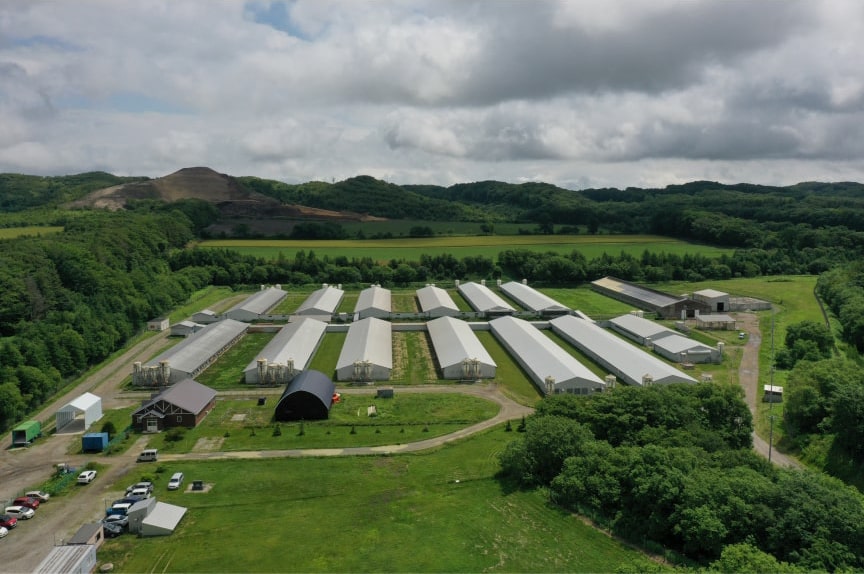
The “Yume no Daichi” brand of pork is ‘Yongenton’ pigs, a crossbreed of four different breeds.
In fact, it is cheaper to produce ‘Sangenton’ pigs without Berkshires because less feed is required. However, we raise ‘Yongenton’ pigs with ‘Berkshires’ for better meat quality.
The characteristics of Yongenton “Yume no Daichi” pigs are that the meat has no odor and has a good fat content that can be crisply shredded when chewed, and “Berkshire” is indispensable for producing this quality.
The farm’s role is to raise and fatten “Yume no Daichi” pigs in order to develop these characteristics and raise healthy pigs.
Point
Yongenton Pigs are born from a combination of two maternal breeds and two paternal breeds.
The maternal line is a crossbreed of the Landrace, which has excellent lean meat, and the Great Yorkshire, which is a good rearing breed. The paternal line is a crossbreed of the Duroc, which produces superb fat meat, and the Berkshire, which has fine so-called “sashi,” or fat with a sweet taste.
The basis of good taste is the health of the parent pigs.
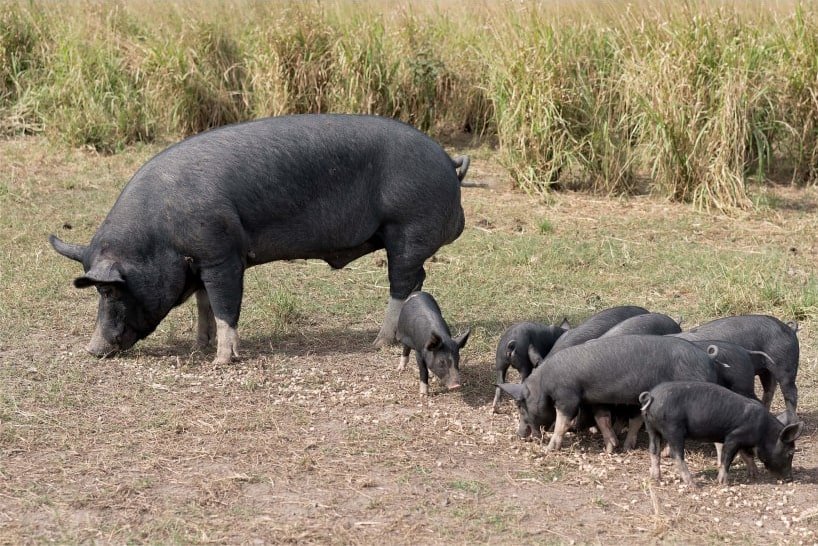
“First of all, it is important that the parent pigs are healthy and strong. If we can create the right conditions for the parent pigs, healthy piglets will be born, even if they don’t need a lot of work. Ideally, the ideal is that this time, when you realize that it wasn’t hard at all, it went easily,” he said.
For that reason, it is necessary to control the amount of feed according to the stage of pregnancy while grasping the condition of each parent pig.
If the pigs are too thin, we feed them a little more to build up their strength, and if they are too fat, we reduce the amount.
He also says that judging the amount of food to feed the piglets after birth is the most difficult part of the process.
He says that the amount of feed is increased when the piglets are drinking milk, but if the amount is increased too soon after the piglets are born, the milk may not come out well or may become clogged. In addition, first-born pigs may not be able to eat after giving birth, he said.
“Now all the staff are watching the pigs very carefully and doing a good job,” he says.
Nurtured by the latest technology and the human eye.
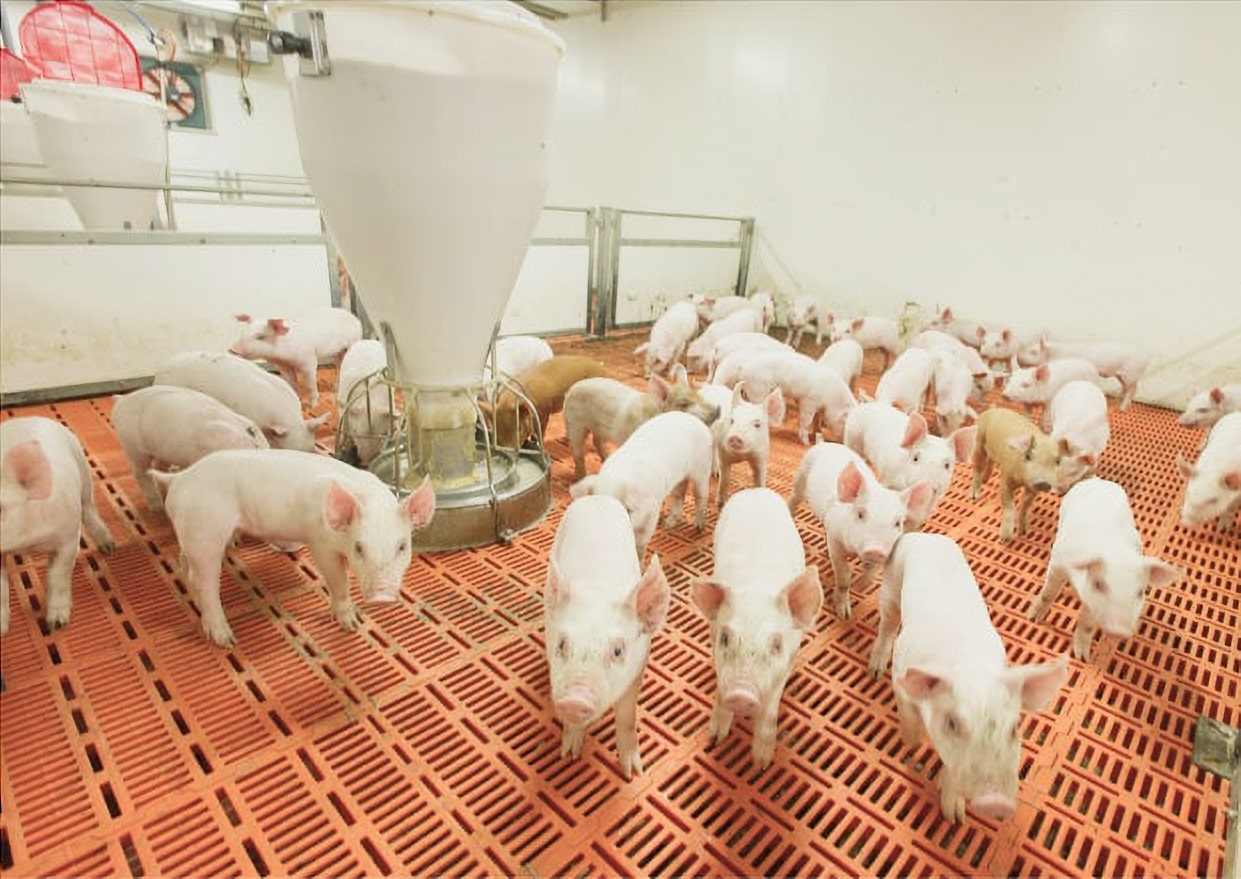
About 10 pigs are born at one birth, and each has its own unique constitution and character.
However, as a large farm, it is difficult to monitor everything 24 hours a day.
“First of all, we make effective use of a monitoring system that allows us to check on them remotely,” says Farm Manager Kogota.
The Chitose farm monitors temperature, humidity, carbon dioxide, and other parameters, as well as video. What can be seen numerically is shared among the staff as a numerical value, so that they can always keep track of the status of the farm.
In addition, it is the human eye that does the final check, and it is the human hand that helps the pigs.
Point
Hokkaido Chuo Bokujyo barns employ a rearing method called the “windless system”.
The “windless system” is a barn in which ventilation, temperature, humidity, and lighting are automatically controlled in order to create an optimal environment for pigs all year round.
Since outside air does not directly enter the barn, it prevents wildlife, wild birds, and pathogens from entering the barn, thereby reducing outbreaks of livestock diseases and other contagious diseases.
Our commitment to nurture each animal one by one.
The size of a farm in pig farming is expressed in terms of the number of sows. Chitose Farm has about 2,300 head of pigs. Chitose Farm is one of the largest pig farms in Japan, with approximately 13,000 piglets, including those being suckled. The daily efforts of 22 staff members, including Mr. Kogota, the farm manager, are indispensable to operate such a large-scale farm.
Of the staff working at Chitose Farm, nearly half are young women, many of whom have no experience in pig farming.
Farm Manager Kogota says, “Because of their inexperience, they work diligently and stick to the basics, and the results are better than we expected. When the scale of the farm is this large, it is not something that can be managed by individual skills. It is important for everyone to follow the basics.
Each staff member has a specific pig that he or she is in charge of, and they all share the responsibility of raising the pigs.
They check the amount of food they eat, the amount of water they drink, the state of their defecation, and whether they are healthy and active, etc. They confirm what they need and what they lack by actually seeing them.
By using a monitoring system and human eyes, technology is used for overall management, and human eyes are used for detailed checks, to provide a comfortable environment for the pigs and realize “health = safety = good taste.
「He also spoke of his commitment to “sticking to the basics and working with an image of how our various daily tasks will lead to future results.
It can be said that Farm Manager Koujita’s beliefs and kindness in nurturing people have made Chitose Farm what it is today.
Side story
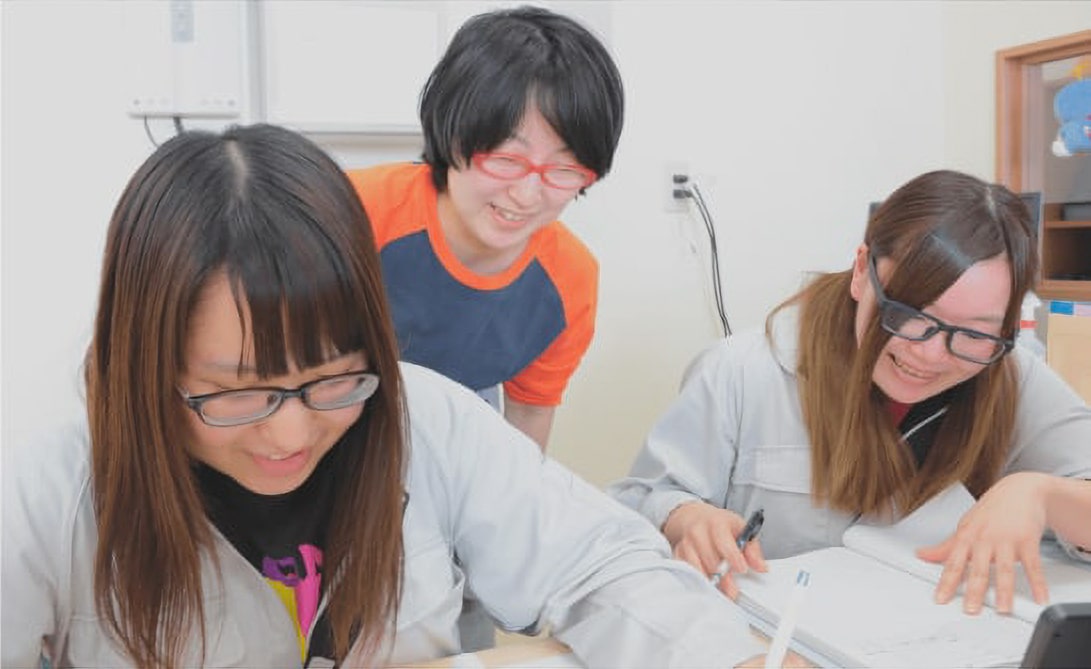
The pig farming business, where pigs are managed day and night, may not give a very pretty image to those who know the old days. Living creatures do not have a day off, so it was very hard work, getting up early every morning 365 days a year, changing the straw for bedding, feeding and watering the pigs, and so on.
Therefore, it was difficult for women to work as one of the important staff members.
It cannot be said that modern pig farming has become easier, but as a result of our efforts to create a comfortable environment for delicate and clean pigs, it has become a comfortable working environment for workers as well.
Branded pork “Yume no Daichi” for vegetables and the world.
Chitose Farm, which is now on track to become a large-scale farm, did not have smooth sailing from the beginning.
“At the time, everyone was working hard, but the most difficult thing was the manure disposal and odor problems,” he says. If we couldn’t get that right at such a large facility, we would have been completely unable to run the business at all.
Excrement is a necessary part of raising pigs. If this is not handled properly, the risk of disease increases for the pigs themselves. They were at a loss because they could not manage the septic tanks and composting barns that handle this waste.
“I’ve already talked to a lot of people. I’ve asked experts for their opinions, and it’s finally going well.”
After much trial and error, he established a method for processing manure. The compost produced from this process is now bearing fruit in a different form. Hokkaido Central Ranch is engaged in “recycling-oriented agriculture” in which arable and livestock are linked.
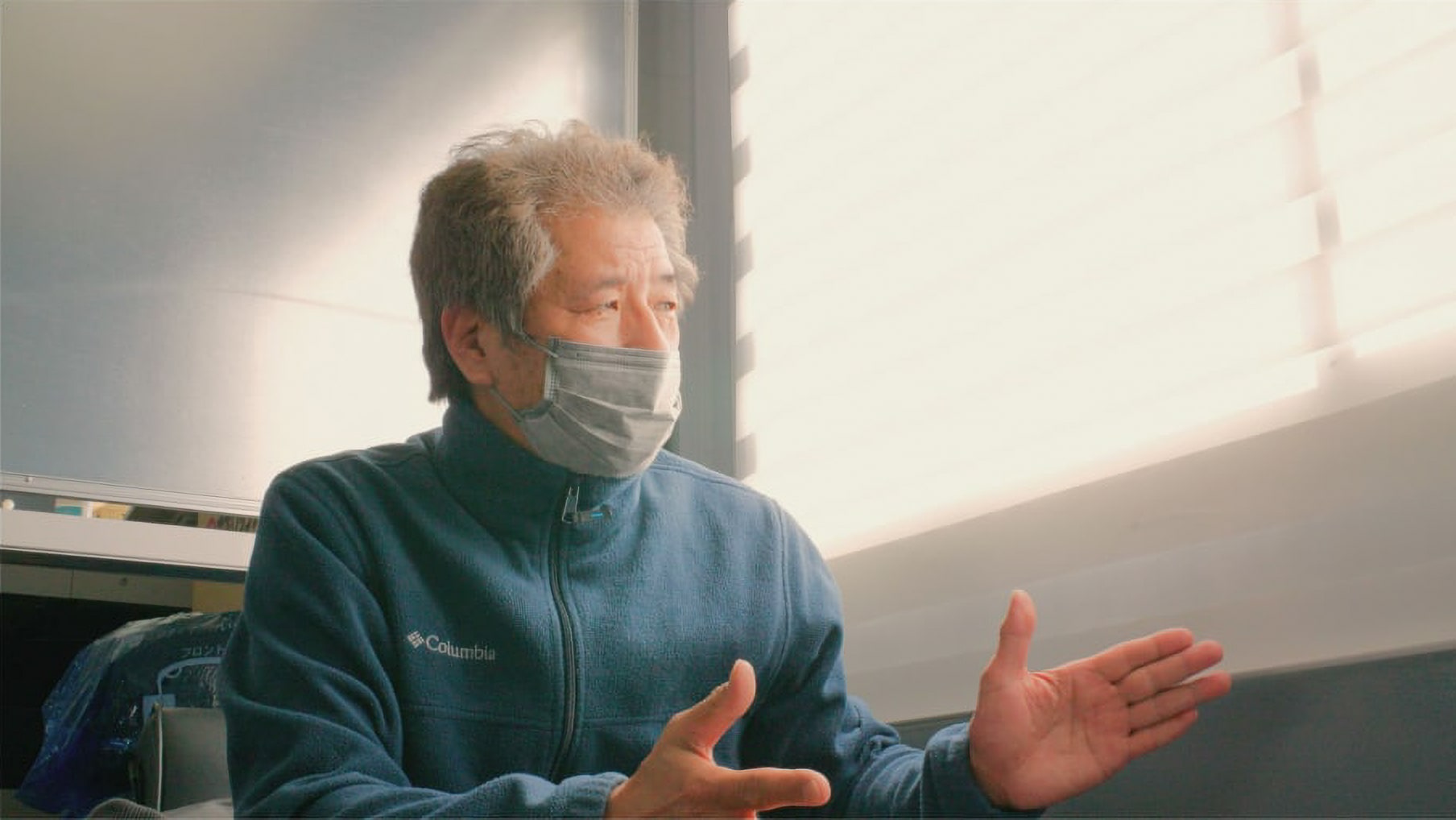
The compost that has been properly fermented is really smooth to the touch and has no smell. This is used to produce vegetables under the “Yume no Daichi” brand.
The fully matured compost produced at the farm is used by affiliated agricultural corporations and farmers to produce vegetables. The excrement from the pigs is composted and becomes nutrients for the fields. The vegetables grow by absorbing these nutrients.
What is expected to come in the future is the use of compost in the ocean.
“Isoyake” is a hot topic in the news these days. Not only does it make it impossible to collect seaweed, but it also destroys the ecosystem. The possibility that compost can help improve this situation is being studied.
The recycling-oriented agriculture of the “Yume no Daichi” brand of pigs, which started at Chitose Farm. This may one day spread to the oceans as well, and may even change the world’s environment in a big way.
Editor

YAMAUCHI Asami
Writer
Born in the Okhotsk region of Hokkaido. After leaving Hokkaido, she realized its charms and made a U-turn and moved to Hokkaido with her family. Her favorite things to do are grilling meat in nature and playing Frisbee with her dog. She will share with you the charms of Hokkaido's slow pace of life, its sightseeing spots, gourmet food, and other attractions through hands-on experience.

